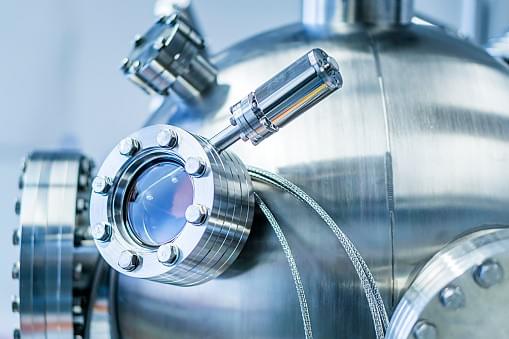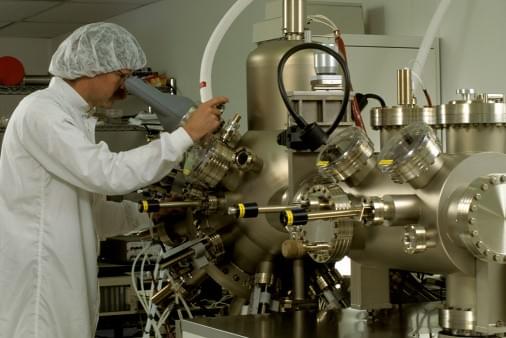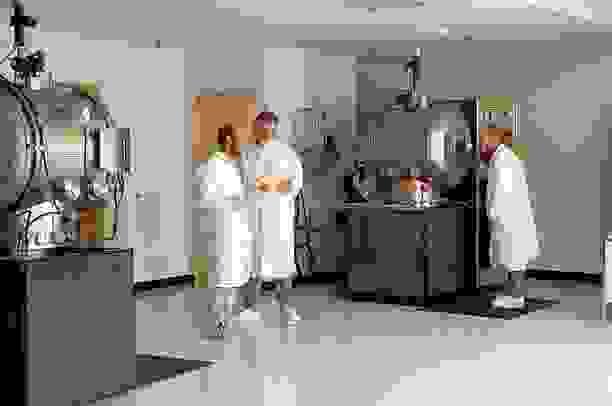
Wear Coating System

The Vacuum Coating Machine Market
The growth of the vacuum coating machine market is largely attributed to the strict regulation of toxic chemicals. Despite several legislative efforts, the problem of regulating industrial chemicals remains unsolved in the U.S. In 1976, the Toxic Substances Control Act (TSCA) was introduced and extended its coverage to newly registered and existing chemicals. Since then, the number of chemicals registered for use in industrial applications has increased. However, the regulatory environment still poses some challenges.
Vacuum coating machine, also known as thin-film deposition, is the process of applying a layer of material on a substrate under high-pressure. The layer is usually 0.25 to 10 microns thick and is designed to protect the substrate. Vacuum coatings have many benefits. For example, they improve the performance of the components that are coated with them. The process also produces parts that are extremely resistant to wear and tear.
Apart from the manufacturing of high-quality, durable products, the vacuum-coating process can also be used to make flexible substrates more beautiful. These products can be used to reduce the transmission of oxygen and water, thereby extending the shelf life of packs. The process also helps in making materials that conduct electricity and save energy. Moreover, it can also be used to control light transmission and prevent counterfeiting. The vacuum coating machine from Foxin is highly versatile and can be used in a variety of industries. Visit this website at https://www.encyclopedia.com/manufacturing/news-wires-white-papers-and-books/spray-paint for more info about coatings.
While the demand for vacuum coating machines is driven by their increasing usage in industrial activities, several factors affect the market's growth. Rising popularity of mobile phones, solar energy, and other industries are the major drivers for the market. In addition, the lack of skilled labor and high initial investment are the primary hindrances in this industry. The market is also expected to grow rapidly during the forecast period. Several emerging markets, including China and the USA, are expected to contribute to the growth of the vacuum coating machine market in the coming years.
Using the PVD Hard Coating System in the manufacture of picture frames is a particularly good option for manufacturers of wood products. Not only does it produce high-quality finishes, but it can also be much faster than spraying. In a single day, the vacuum coating machine can coat around seven to ten linear meters of 50mm architrave. A vacuum coating machine can also coat furniture and other non-wood products, such as trays and baskets.
PVD processes are other popular coating methods using a vacuum chamber. The former uses a line-of-sight process where an atom of metal is vaporized and then deposited on a part above or below the target. The latter process uses electrical arc discharges to vaporize a material and deposit the coating onto a part in the vacuum chamber. If the PVD process is successful, the product will be highly scratch-resistant.
The Vacuum Coating Society (SVC) is an international association of scientists, engineers, and technical personnel who promote the application of this new process. The association provides training on new vacuum coating technologies and products and facilitates networking. The SVC is committed to promoting vacuum coating research and innovation and the adoption of low-pressure plasma coating products. Several SVC courses are offered in this context. In addition, the SVC organizes a variety of webinars to share the latest knowledge and expertise within the vacuum coating industry.

The Benefits of Vacuum Metalization
Using a vacuum metalization process is the best way to manufacture certain kinds of materials, such as metals. Among all the types of metals, silver is the most popular for this application, and it's also one of the most expensive. Other metals that are great for vacuum metallization are copper, zinc, and aluminum. They have excellent electrical conductivity, but they are expensive and prone to oxidation and corrosion. Aluminum, on the other hand, has several unique properties that make it ideal for vacuum metallization. Its low cost and superior reflectivity make it an attractive choice for a wide range of applications, including automotive lighting and industrial lighting.
Vapor wear uses a special chamber to deposit decorative and functional coatings on the parts. It works by feeding a piece of metal into a chamber with a high vacuum. This lowers the boiling point of metal parts, and the lack of pressure forces the metal to change state from liquid to gas. As the metal vapor is allowed to cool, it bonds with the part, producing a decorative or metallic coating. A vacuum metalization chamber has a working vacuum of 4x10-4 Torr.
While the process of vacuum coating is primarily used for aesthetic purposes, it has also gained much popularity for industrial applications. It is especially suitable for the coating of high-tech items and for shielding components. It enhances the reflectivity and radiation properties of materials, making it a valuable choice for insulation. Similarly, the metallization process is used in the production of radiation barriers and spacecraft insulation systems. The result is a thin metal film on the surface of the materials.
Decorative chrome coatings can be applied to metal objects with a vacuum metalization process. The process is environmentally friendly, requiring no harmful chemicals and is resistant to delamination and harsh climatic conditions. To understand the process better, consider the following drawings. FIG. 2 is a cross-sectional view of the substrate. A cross-sectional view of the substrate reveals the layers formed during the vacuum metalization process. The finished product has several benefits over conventional chrome plating. For more facts about coatings, visit this website at https://edition.cnn.com/2019/03/15/health/epa-methylene-chloride/index.html.
Vacuum metallization offers environmental and safety benefits over other processes. No harmful chemicals are released during the process, so there are no airborne chemical fumes to worry about. Because the metal is vaporized, no outside contaminants are exposed to the chemical fumes. This makes vacuum metallization a better choice for many industrial coating requirements. Furthermore, the process can offer a wide range of properties and resistance, including shielding against electromagnetic interference and high tolerance for coating properties.
Vacuum metallization can be performed on a variety of materials. Automotive and motorcycle trims can be vacuum-metalized, as can lamp reflectors, advertising display items, and even fishing lures. Some of the most common items that can benefit from vacuum metalization include automotive parts, sports equipment, jewelry, and toys. Further, it can be used on a variety of plastic substrates, including packaging films and film.

Protect Your Metal Parts With a Wear Coating System
If you are looking to add protection to your metal parts, one of the best ways to do so is by using a wear coating system. A wear coating system is a two-component solution that withstands impact and abrasive slurries. They can also withstand chemical attack and cavitation, and have excellent gloss and durability. The main advantages of these systems are that they can be applied using a trowel or brush, and are highly resistant to water, oil, and other fluids.
Hardness is an important consideration in a wear-resistant coating system at https://vergason.com/systems/vacuum-metalizing-systems/, but it should be balanced with flexibility to ensure the most long-term performance. Too hard of a coating system may fracture or break when it comes into contact with a brittle surface. Elasticity is also an important factor, as the harder it is, the more likely it will fracture. The elastic limit of strain is an indication of how much a coating system can withstand before permanent deformation occurs.
A scratch resistance test is another important test to check the resistance of a paint film. It evaluates how well it can resist being scratched. A test needle with a 1mm diameter steel ball attached is used for this purpose. The needle is applied to a horizontal sliding panel and moved at a speed of 3 to 4 cm per second. The 'needle' consists of a shank and a soldered 1mm steel ball. The holder holds the test panel horizontally. Make sure to check out this website at https://www.youtube.com/watch?v=TDzwut8lU3I for more details about coatings.
PVD Wear Coating System has many advantages, and many industries have successfully overcome this problem by using them. PTFE, for example, is a wear resistant coating that bonds to a resin system. It is designed for different industries, including Oil and Gas, Pumps, Valves, and Automotive components. This type of coating can help to extend the life of your equipment and reduce your overall cost of ownership. The cost of maintenance is also low, because PTFE-coated parts are easy to clean and require little to no maintenance.
Another type of protective coating is used in the Mining and Ore Processing industry. These coatings provide protection against abrasion and corrosion on metal parts. Once you know the exact needs of your application, selecting the right protective coating will be easier. You should also consider the environmental conditions that are prevalent in your process areas. The factors that determine the ideal protection for your equipment will help you choose the right solution. This article will explore the benefits of protective coatings.
ETFE is a wear-resistant polymer made from tetrafluoroethylene (PTFE). Its abrasion and cut resistance are unmatched by any other material. It is an excellent choice for pump impellers and machinery that operates in chemically aggressive environments. ETFE is also available in a semi-crystalline form. These polymers are highly resistant to chemical attack and are ideal for anti-corrosion applications.
Proudly built with Strikingly


